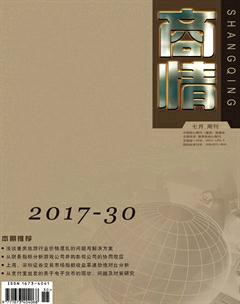A Brief Introduction to Surplus Value in Das Kapital
王雨婷
Abstract:The proposal of surplus value is a major revolution in the development of human society, for that the theory has made the mode of capital production clear and revealed the law for the development of human society scientifically and systematically. This paper is going to give a brief introduction to surplus value—what it is; how it works; and what the role it plays in the capital expansion.
Key Words:surplus value; commodity circulation; labor; expansion of capital production
When it comes to the market and production, the word “circulation filed” must be mentioned. In the commodity market, there are two necessary components: currency (money) and commodity, and one basic law for “commodity circulation”: W—G—W (W standing for the commodity and G on behalf of the currency), meaning that people work to produce valuable goods, selling them to get money, and with which to buy what they need for living. However, for capitalists they are not interested in the commodity but the money, so the law for their “currency circulation” is: G—W—G, and here G is composed of the original G and the plus currency from the circulation. According to the exchange of equal value law, the value of goods is decided by the necessary labor time for producing, and no one in the market would like to pay for them with a higher price or sell them with a cheaper price. As a result, surplus value cant be realized only depending on the commodity circulation in the market. It was based on the medium, circulation, because in which the capitalist is able to buy labor in the market. While it is not in the circulation, for that the circulation is just in preparation for the process of value increment, and the process was conducted in the “production field”.
Now the paper is going to explain how the value increment realized in the“production field” with the special commodity “labor”. A labor needs the money to making its living and raising the family, and the market shows out that the total value that it needs to be produced as a commodity, so no matter how long it works after the necessary working time, the price for its value is settled. From the respective of quantity, the labor has not only produced the commodity, of which the value equals the money it is paid for, but also a surplus value, reflected in the surplus commodities. Here the author would like to discuss two conceptions—“constant capital” and “variable capital”. Materials themselves have transformed into capital during the production process, but their value has not changed but just transferred to the products (commodity) in full, so they are named as “constant capital”. While the labor, transformed into the capital during the production process, has changed its value, in that it has not only produced the value of itself but also an exceeding part—surplus value, so it is the “variable capital”.endprint
Once the capitalist gets profits during the production process, he must want to get more, so how can he make it work for getting more surplus value, or in another word, for better exploiting the labor? Two conceptions will be introduced—one is “absolute surplus value” and the other is “relative surplus value”. As it has been explained in above, when the surplus working time of which the value will manifest in the commodity get longer, the capitalist will get more profits from the commodity. As the necessary working time is settled, the surplus working time is longer, so is the total working time. Despite all the efforts, the profits are still limited even if the labors work 24 hours for a day and never rest, so “clever” capitalists come up with another exploitation way for the “relative surplus value”. Firstly, production needs the division and cooperation of the society, if every capitalist increase the labor productivity in his area, the productivity of the whole social production will be increased, and that is absolutely beneficial to none but the whole capitalist class. Secondly, collaborative working is important in modern society as it has many advantages, yet the final benefits will only go to capitalist. Thirdly, machines and factories are inventions in the industrial revolution which has enhanced the productivity greatly.
The capitalist does not use all the surplus value as a personal consumption, instead converts some of the remaining value into capital, which is called capital accumulation. For the expansion of capital production, with the surplus value, which capitalists gained from one generation, they exploit the next new generation. With the exploitation of labors of generations, the capital production expands and develops infinitely.
Works Cited :
[1]Marx. Das Kapital. 1867. Beijing: China Central Compilation and Translation Bureau, Aug. 1975.
[2]Marx, Engels. Marx and Engels. Edit. Lenin.1898.Beijing: China Central Compilation and Translation Bureau, Aug. 2014.
[3]俞明仁. 資本论讲解.[M]. 浙江:浙江人民出版社,1983.endprint

